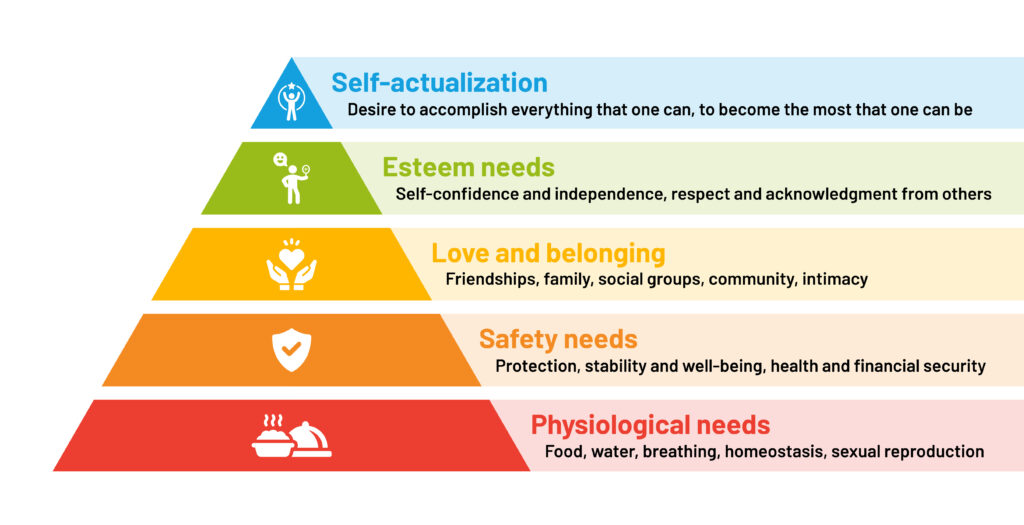From Intrinsic to Extrinsic Motivation: Let’s Get Real about Why We Work
Let’s get real – why do we work? Is it the money? The sense of accomplishment? The challenge of tackling a difficult problem? It turns out, our motivations to work can be divided into two broad categories: intrinsic and extrinsic motivation.
In this blog post, we’ll explore both of these motivations and how they can be used to help make work more fulfilling. Keep reading for more!
The Psychology of Workplace Motivation

The psychology of workplace motivation delves into the underlying factors that drive us to work and perform at our best. Understanding these motivations can help us create a more fulfilling and satisfying work environment.
One of the key theories in this field is self-determination theory (SDT). According to SDT, humans have three basic psychological needs: autonomy, competence, and relatedness. Autonomy refers to our desire for independence and the ability to make choices in our work. Competence is the need to feel capable and effective in what we do. And relatedness is the need for social connection and positive relationships with our colleagues.
When these needs are satisfied, employees experience intrinsic motivation. This is the internal desire to engage in a task for its own sake, driven by the enjoyment and satisfaction it brings. Intrinsic motivation is associated with higher levels of creativity, productivity, and overall job satisfaction.
On the other hand, extrinsic motivation is driven by external rewards or punishments. These could include monetary incentives, promotions, or recognition from others. While extrinsic motivation can be effective in certain situations, it generally has less long-term sustainability compared to intrinsic motivation.
Understanding the psychology of workplace motivation can help organizations create environments that foster intrinsic motivation by focusing on autonomy, competence, and relatedness. By nurturing these psychological needs, employers can empower their employees, enhance job satisfaction, and ultimately drive better performance.
Intrinsic vs. Extrinsic Motivation

Now that we have a basic understanding of the psychology behind workplace motivation, let’s dive into the difference between intrinsic and extrinsic motivation.
Intrinsic motivation, as we mentioned earlier, comes from within. It’s the inner desire to engage in a task simply for the joy and satisfaction it brings. When we have intrinsic motivation, we drive ourselves through personal enjoyment and the sense of fulfillment that comes from task completion. It’s like doing something because we love it and it makes us happy.
Extrinsic motivation, on the other hand, is driven by external factors. This could be anything from monetary rewards to recognition from others. When we have extrinsic motivation, we focus on the outcome rather than the process. We may be working towards a promotion, a bonus, or even just to impress our colleagues. While extrinsic motivation can be effective in the short term, it may not provide long-lasting fulfillment.
Both intrinsic and extrinsic motivation play a role in the workplace. In fact, many tasks may require a combination of both. However, research has shown that intrinsic motivation tends to be more sustainable and leads to higher levels of job satisfaction and productivity.
So, the question is: how can we create a work environment that fosters intrinsic motivation? How can we tap into our employees’ natural desire to do their best? Let’s explore these questions in the following sections.
Maslow’s Hierarchy of Needs

Maslow’s Hierarchy of Needs is a theory that explains human motivation based on a hierarchy of different needs. According to this theory, people are motivated to fulfill certain needs in a specific order, with each need building upon the previous one.
At the base of the hierarchy are our physiological needs, such as food, water, and shelter. Meeting these needs is essential for us to progress up the hierarchy and shift our attention to other needs. After fulfilling our fundamental physical needs, we progress to the next level, which involves safety and security. This includes feeling safe in our environment, having a stable income, and having access to resources that can provide a sense of security.
The next level in the hierarchy is belongingness and love. This involves forming social connections and having positive relationships with others. It is important for us to feel a sense of belonging and to have a support system in order to fulfill this need.
Once our need for belongingness and love is met, we move on to the level of esteem. This includes gaining recognition and respect from others, as well as feeling a sense of accomplishment and self-worth. It is important for us to feel valued and appreciated in order to fulfill this need.
Finally, at the top of the hierarchy is self-actualization. This is the need to reach our full potential and fulfill our individual goals and aspirations. It is about personal growth, creativity, and self-fulfillment.
Understanding Maslow’s Hierarchy of Needs can be helpful in creating a work environment that meets employees’ needs and promotes intrinsic motivation.
The Role of Rewards in Motivating Workers

Now, let’s talk about the role of rewards in motivating workers.
Rewards play a crucial part in our motivation to work and can be a powerful tool for organizations to boost employee performance and engagement.
When we talk about rewards, we often think of extrinsic motivation – the external incentives that drive us to work. These can include things like bonuses, promotions, and recognition from others. And let’s be honest, who doesn’t love a little extra cash or a pat on the back for a job well done?
Rewards can provide a tangible and immediate sense of accomplishment and satisfaction. They can also act as a way to reinforce desired behaviors and performance standards within an organization. When employees know that their efforts will be acknowledged and rewarded, they are more likely to stay motivated and strive for excellence.
However, it’s important to remember that rewards alone are not enough to create sustainable motivation. While extrinsic rewards can be effective in the short term, they may not provide long-lasting fulfillment. Employees may become solely focused on the rewards and lose sight of the intrinsic value and enjoyment of the work itself.
That’s why it’s crucial for organizations to find a balance between extrinsic and intrinsic motivation. While rewards can serve as powerful motivators, it’s important to use them in conjunction with strategies that nurture intrinsic motivation, such as providing opportunities for growth, autonomy, and a sense of purpose.
Ultimately, a combination of both intrinsic and extrinsic motivation can create a work environment where employees feel empowered, engaged, and motivated to do their best. By understanding the role of rewards and leveraging them effectively, organizations can create a positive and fulfilling workplace culture that drives success.
The Power of Purpose in the Workplace

When it comes to workplace motivation, one of the most powerful forces is the sense of purpose. Having a clear and meaningful purpose in our work can be incredibly motivating and fulfilling.
Purpose is what gives our work a sense of meaning and direction. It’s what makes us feel like our contributions matter and that we are making a difference in the world. When we understand the impact that our work has on others, it can ignite a fire within us and drive us to do our best.
A strong sense of purpose can also provide us with a greater sense of satisfaction and fulfillment. When we believe in the work we are doing, we are more likely to find joy and meaning in our daily tasks. It can also help us overcome challenges and setbacks, as we have a larger goal to strive towards.
In addition, purpose can foster a sense of connection and unity within a team. When employees share a common purpose, they are more likely to collaborate, support one another, and work towards a shared vision. This can lead to a more positive and cohesive work environment.
So, how can organizations foster a sense of purpose in the workplace? It starts with clear communication and alignment of goals. Employees should understand how their work contributes to the overall mission and vision of the organization. Additionally, organizations can provide opportunities for employees to engage in meaningful work and make a positive impact.
Ready to sell your property? Give us a call today and learn more about our professional photography services and marketing that can boost your property listing!
Plus, explore our virtual assistant coaching program to level up your business. Don’t forget to tune into our new podcast for even more valuable insights!
